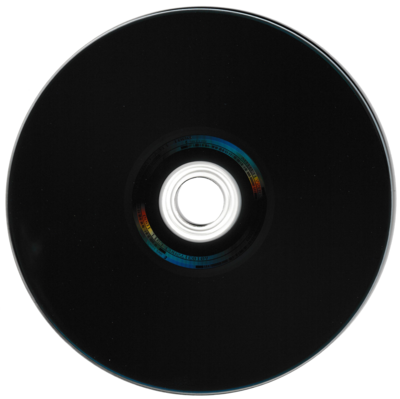
Search
Ultra HD Blu-ray

Ultra HD Blu-ray (4K Ultra HD, UHD-BD, or 4K Blu-ray) is a digital optical disc data storage format that is an enhanced variant of Blu-ray. Ultra HD Blu-ray supports 4K UHD (3840 × 2160 pixel resolution) video at frame rates up to 60 progressive frames per second, encoded using High-Efficiency Video Coding. These discs are incompatible with existing standard Blu-ray players.
The discs support both high dynamic range by increasing the color depth to 10-bit per color and a greater color gamut than supported by conventional Blu-ray video by using the Rec. 2020 color space. Ultra HD Blu-Ray discs also support a 12-bit per color container via Dolby Vision. Dolby Vision content on 4K UHD Blu-Ray can also be mastered for 10,000 nits peak brightness, whereas standard HDR10 can only achieve a maximum of 4,000 nits of brightness. Moreover, Dolby Vision makes use of dynamic metadata, which adjusts the brightness and tone mapping per scene. In contrast, standard HDR10 only makes use of static metadata, which sets the same brightness and tone mapping for the entirety of the content.
The first Ultra HD Blu-ray Discs were officially released in the United States on February 14, 2016. To differentiate retail Ultra HD Blu-ray releases, the format usually uses a black opaque or largely transparent keep case packaging format (as opposed to blue), but with the same case size as standard Blu-ray. The format is supported on Microsoft's Xbox One X, One S, Series X, and Sony's PlayStation 5. Software made for the PlayStation 5 can use 100 GB UHD Blu-ray discs.
Specifications
The specification for 4K Blu-ray allows for three disc capacities, each with its own data rate: 50 GB at 72 or 92 Mbit/s, and 66 GB and 100 GB at 92, 123, or 144 Mbit/s. On 66 GB and 100 GB discs, the pits and lands are not narrower than those of a standard Blu-ray Disc, but shorter, which increases the capacity of each layer from 25 GB to 33 1/3 GB. This also means that each revolution of such a disc transfers more data than that of a standard Blu-ray Disc, which means the transfer rate is higher with the same linear velocity. In addition, the disc can be encoded to have the drive hold the full 5,000 rpm until it reaches a point largely away from the innermost part of the disc if an even higher transfer rate is needed. 50 and 66 GB use two layers, and 100 GB uses three layers. Ultra HD Blu-ray technology was licensed in mid-2015, and players had an expected release date of Christmas 2015. Ultra HD Blu-ray uses a new revision of AACS DRM: AACS 2. AACS 2.1 is used on certain releases such as Stand by Me, Fury, The Patriot, and Zombieland.
On May 12, 2015, the Blu-ray Disc Association revealed completed specifications and the official Ultra HD Blu-ray logo. Unlike conventional DVDs and Blu-rays, the new 4K format does not have region coding.
On February 14, 2016, the BDA released Ultra HD Blu-ray with mandatory support for HDR10 Media Profile video and optional support for Dolby Vision.
In December 2017, the BDA also settled the specification for an 8K Blu-ray format for use in Japan. More than two hours of 8K UHD content can be recorded on BDXL discs (128GB – quad-layer, 100GB triple-layer).
On January 23, 2018, the BDA spec v3.2 gained optional support for HDR10+ and for SL-HDR2 (developed by Philips and Technicolor) also known as Advanced HDR by Technicolor. However, no Ultra HD Blu-ray player has ever supported SL-HDR2, and no discs encoded in SL-HDR2 have been released.
Advanced HDR by Technicolor
The term Advanced HDR, as used by Technicolor, covers a group of three Technicolor HDR technologies: SL-HDR1 (Single-Layer HDR1); SL-HDR2; SL-HDR3.
SL-HDR1
According to Technicolor, Technicolor “has developed a single-layer solution, known as Technicolor HDR (ETSI standard SL-HDR1), which ensures backwards compatibility with all non-HDR screens and non-HDR equipment. Broadcasters just need to produce a single feed, and the technology allows content to be converted into a format for both legacy screens and HDR screens.”
Ultra HD Blu-ray disc encoding
Most retail Ultra HD Blu-ray discs are encoded with Ateme TITAN. Ultra HD Blu-ray discs use HDMV or BD-J for menus. Subtitles use Presentation Graphic Stream, which is the same format as normal Blu-ray discs.
PC playback
Only computers with activated Software Guard Extensions (SGX) support Ultra HD Blu-ray playback. Intel introduced SGX in the Skylake generation Core processors in 2016, enabling PCs to play protected Blu-ray discs for the first time. In January 2022, Intel deprecated support for SGX for the Rocket Lake and Alder Lake generation desktop processors, leading to Ultra HD Blu-ray discs being unplayable on those systems, even with licensed software such as PowerDVD. However, on systems without SGX support, Ultra HD Blu-ray discs can be ripped using a drive with patched firmware (LibreDrive) and compatible software such as MakeMKV, DVDFab, or AnyDVD HD.
8K format
The Blu-ray Disc Association also completed the specification for an 8K Blu-ray format supporting 8K UHD (7680 × 4320 pixel resolution) videos for use in Japan. However a spokesperson from the association said that the release of such a format would be unlikely. This may be partly driven due to lower than expected sales of 8K resolution televisions.
References
Text submitted to CC-BY-SA license. Source: Ultra HD Blu-ray by Wikipedia (Historical)
Owlapps.net - since 2012 - Les chouettes applications du hibou



